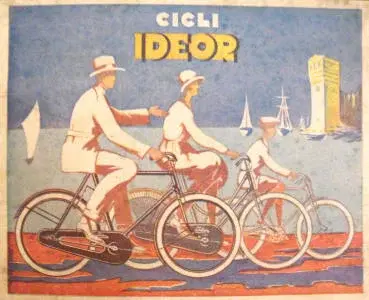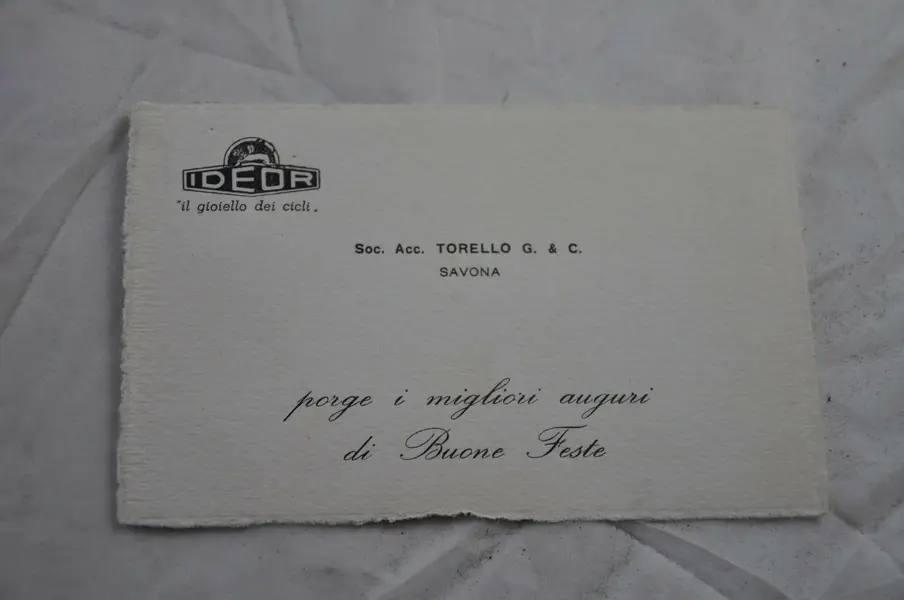D
Deleted member 57380
Speak of the devil; Torelli contacted me (found in my junk so lucky to see it. My question was essentially who made your steel frames in the '80s & "90s, and who makes them now. Odd how the easiest part of my query was not answered since I assume the owner knows who presently makes all of their frames. I could not understand the rest about value and other comments since I never stated I owned a Torelli badged bike, tjat tjere was any "value" issue, nor indicated any desire to buy one so not sure if the intent was to interest me in a new bike.
"Ciao Jesper,
Thanks for reaching out, and I appreciate the well thought out comparison and value add of Torelli versus going direct with an Italian builder. First, regarding your frame, the records from the late 80's to early 90's are fairly spotty. I purchased the brand from the founder, Bill McGann, and lot of details and documents specific to who built which model during a given timeframe was non-existent. I do have some that I can turn to that may shed light on deciphering who built your frame. The most notable builder on the higher end models was Antonio Mondonico, and I know most of those, although that timeframe may have been a little early for Antonio............
............I have a small boutique brand in New York, could, but doesn't have the connections within the Italian industry. He has me to do all of his frames for him, because we know what we're doing and have the experience. I've also had a client in Sweden that has purchased several frames from me. He has stated that the great thing is that he can get a beautiful Italian built machine, but he doesn't have to deal with the Italians. I love the Italian culture, people and cycling industry, but they are not always the easiest to work with. I have the experience in working with them - and I love it."
I cut out all the stuff about VAT and tariffs and painting, etc. It appears that the present owner is essentially, aside from his "Torelli" business, a broker of Italian frames to various other businesses putting their own badging on them. That was something I was trying to clear up regarding buying a generic frame made by one company but distributed to multiple dealers who want to claim that their bike (e.g. Torelli) is so much better than the shop which sells the same frame under another marque. I feel that that is the same situation that occurs when boutique builders outgrow their backyard shop and become essentially mass production operations (e.g. Colnago though now most is not even made in Italy) and no longer actually produce a large percentage of "their" products. It is more than anecdotal that Colnago farmed out a lot of their frame work (bearing Colnago markings) to multiple Italian contract builders (Vetta definitely for one; very probably Torelli's supplier at some point or still is) even as early as the mid '70s; that is why Rauler became framebuilders helping Colnago early on; and why on Colnago's and other marques' frames are not necessarily consistent in "factory" features and/or quality.
"Ciao Jesper,
Thanks for reaching out, and I appreciate the well thought out comparison and value add of Torelli versus going direct with an Italian builder. First, regarding your frame, the records from the late 80's to early 90's are fairly spotty. I purchased the brand from the founder, Bill McGann, and lot of details and documents specific to who built which model during a given timeframe was non-existent. I do have some that I can turn to that may shed light on deciphering who built your frame. The most notable builder on the higher end models was Antonio Mondonico, and I know most of those, although that timeframe may have been a little early for Antonio............
............I have a small boutique brand in New York, could, but doesn't have the connections within the Italian industry. He has me to do all of his frames for him, because we know what we're doing and have the experience. I've also had a client in Sweden that has purchased several frames from me. He has stated that the great thing is that he can get a beautiful Italian built machine, but he doesn't have to deal with the Italians. I love the Italian culture, people and cycling industry, but they are not always the easiest to work with. I have the experience in working with them - and I love it."
I cut out all the stuff about VAT and tariffs and painting, etc. It appears that the present owner is essentially, aside from his "Torelli" business, a broker of Italian frames to various other businesses putting their own badging on them. That was something I was trying to clear up regarding buying a generic frame made by one company but distributed to multiple dealers who want to claim that their bike (e.g. Torelli) is so much better than the shop which sells the same frame under another marque. I feel that that is the same situation that occurs when boutique builders outgrow their backyard shop and become essentially mass production operations (e.g. Colnago though now most is not even made in Italy) and no longer actually produce a large percentage of "their" products. It is more than anecdotal that Colnago farmed out a lot of their frame work (bearing Colnago markings) to multiple Italian contract builders (Vetta definitely for one; very probably Torelli's supplier at some point or still is) even as early as the mid '70s; that is why Rauler became framebuilders helping Colnago early on; and why on Colnago's and other marques' frames are not necessarily consistent in "factory" features and/or quality.


